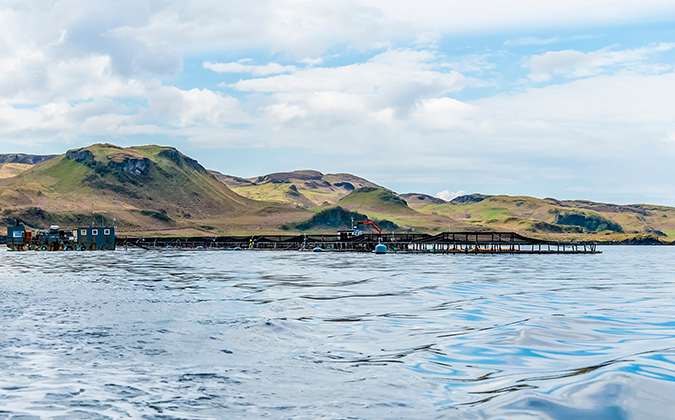
Revealing shared welfare challenges and solutions in the Scottish salmon industry
Sea lice, gill health and environmental challenges are the major considerations for Scottish salmon producers looking to improve the welfare of their fish, according to an Institute of Aquaculture survey.
In research led by Tim Wiese, 61 professionals from the industry anonymously responded to questions around key welfare themes. Participants included farm operators, fish veterinarians and area managers.
The survey began open-ended, and moved toward the perceived practicality and effectiveness of a number of welfare indicators, before addressing the direction of future research.
Key themes dominate
The top priorities of lice, gill issues and the farming environment, with the last focused on water quality, accounted for 55% of responses. However, priorities differed depending on where respondents worked in the salmon-farming system, with sea lice, for example, considered a relatively low priority for those with experience only in the freshwater phase.
“Since welfare isn’t something that can be simply measured by a single quantitative expression, the challenge we’re all faced with is somehow coming to an agreement on how all of these different indicators and measures should be used and integrated together,” Wiese told delegates at the Aquaculture Europe conference.
Remote observations may be key
Physiological measures of stress in fish tended to be considered highly effective but impractical, and assessing stocking densities was thought to be practical but less effective in improving welfare outcomes.
There was considerably more agreement around monitoring the behavior, appetite and health status of fish, Wiese said, with such measures generally considered to be both practical and effective means of increasing welfare.
“Out of all the categories listed, these could also arguably constitute a broader class of non-invasive animal-based measures that could be monitored remotely. And these high ratings reported suggest that these are measures that the participants find more suitable,” he continued.
“In order to identify areas of welfare assessment that are not only suitable for ongoing monitoring but are also in demand for product development, those ratings have to be considered.”
Remote monitoring of health and welfare indicators using sensors and audio or video systems was identified as the main research priority by participants.
“Non-invasive animal-based measures, in my opinion, would be some of the best-suited for leveraging both sensor and machine learning technologies to eventually get us to a point where we receive precise, real-time information on salmon health and well-being in such a way that it benefits not only welfare but productivity,” he added.






